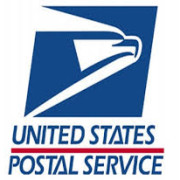We recently had conversations with a large retail business to do some consulting work with an annual freight spend in excess of $100 Million. Obviously that is a significant freight spend and one that should immediately command a great deal of respect from a freight carrier partner. Against our best recommendations, the retailer decided to “go it alone” instead of working with us or another logistics expert. They had some very talented and highly trained people in their logistics department and in their global procurement department as well and felt like they were well-equipped to handle the negotiations.
The reality is that due to the complexity of freight carrier pricing elements, which are varied and include such items as application of varying base rates, discounts, incentives, carrier rules, regulations, additional surcharges, etc, requires a good deal of understanding before entering into any carrier negotiations. These pricing elements are further complicated by complex and diverse freight carrier pricing agreements and contractual provisions offered by the freight carrier community. Make no mistake, these complications are purposeful. It’s simply impossible for an in-house logistics expert to have the knowledge and expertise to benchmark and specifically target price rates and examine these complicated and confusing terms without outside competitive analyses.
In addition to pricing and contract anomalies, a shipper needs to ensure they know exactly what will be thrown at them during the negotiation session(s). Without complete knowledge of what to expect in the negotiation, the company might just have to fold their tent and accept what the other side has offered because they will be absolutely powerless. They are putting their company at risk of losing ground each and every time they enter into these negotiations.
Just two short years ago, the logistics department of this retailer made the decision to change their primary carrier and give the lion’s share of their business to their former carrier’s top competitor. That change did in fact result in savings, but an important point here is that the shipper never really knew if they “left money on the table” because they went into the negotiations without any comprehensive competitive pricing data available to them. While they had a talented logistics team, they did not have the ability to provide the new carrier with any comprehensive shipment data. So, they merely accepted the new price offerings the carrier had offered and signed a two year contract. Those negotiations did however provide a reasonable savings.
Also, two years ago the company for the first time hired a very qualified freight invoice audit company who in addition to auditing all of their freight invoices for billing errors, had the ability to dive deep into the company’s actual shipping transactions and with its strong data mining capabilities, provide the shipper with some very comprehensive information regarding its actual shipping characteristics which is vital in these negotiation sessions. In addition, the audit firm had the ability to provide comprehensive competitive pricing analyses to show the retailer exactly what rates the shipper was in fact “entitled” to due to its large shipping volumes, freight shipping characteristics and extremely prompt freight payment capabilities. All this information was now available to them before this new round of negotiations even started. The information would be invaluable in the shipper’s on-going pricing and contract negotiations, only if it were used.
Now two years later, the logistics department began discussions with that current primary service provider to see what, if any additional savings they could achieve by extending their current business arrangement for an additional two or perhaps better, three years.
Over the span of several months, the freight carrier had been repeatedly requested to provide small tweaks to their numerous back and forth pricing offerings and provided the shipper with what in the end, amounted to inconsequential savings. Then the carrier, who was clearly in the driver’s seat, dropped the hammer on the shipper. They had had enough of the consistent tweaking requests and ultimately provided the shipper with what they termed was their “final offer.”
The carrier gave the shipper an “offer it couldn’t refuse” to take what they had offered or find another carrier to handle their shipments. While changing carriers was certainly an option for the shipper it would have meant months of searching out and qualifying additional competitive carriers. Secondly, the carrier knew the shipper did not have an appetite for changing carriers in the first instance by tipping their hand to that point early on in the negotiation process.
To make matters worse, the carrier added insult to injury by publishing a penalty provision in their new contract that if the shipper stopped using the carrier at any point in the next three years, the shipper would have to pay steep penalties for taking such action. Now, it was even more evident that the carrier and not the shipper, was in fact in the driver’s seat. The shipper who was totally unprepared for the negotiation process in the first place was totally intimidated and decided to sign the contract and say no more.
It’s worth repeating, that the shipper failed to fully understand the need to enter this negotiation from a position of strength; they certainly did not. They had no idea once they started the negotiations as to what a successful negotiation should really look like. They failed to utilize the resources it had available to them, that being the comprehensive shipment data and the Target Pricing and Benchmarkinganalyses the shipper’s audit company had provided.
The so called “experts” in the logistics department felt they knew what they were doing and didn’t need any expert advice. . Had the shipper properly done its homework, it would have known from the comprehensive shipment data and benchmarking analyses it had in its possession what rates it should accept to ensure the lowest rates for the services offered. More importantly, the carrier would have clearly understood that the competitive pricing information the shipper had was in fact pricing the carrier and shipper could both live with.
They also should have let the carrier know early on in the negotiation process that it did not have a lock on their business. Once a carrier knows it has a lock on the business and there are no apparent competitors, it’s time to “take your ball and go home.”
Perhaps the shipper should have thought twice, or even three times about going it alone, because after the contract was ultimately signed, the revised Target Pricing and Benchmark Analysis revealed that the shipper did in fact leave money on the table to the tune of over $5 Million annually. The procurement department at this point was at a loss as to what the next steps could be, if any. It ultimately decided its hands were tied behind their back and it was not in their best interest to challenge the freight carrier, after all, the damage had already been done.
Our goal should always be to evaluate what expertise may be lacking in certain areas of our business and decide what resources we need to engage and, when best to engage those resources to ensure we overcome any internal shortcomings which will always guarantee a positive outcome!
Many companies today are taking the approach of focusing on their core competencies with their in-house staff and outsourcing all other areas of the business to the best available SME’s, Subject Matter Experts. This is a smart business decision and one that over time usually pays huge dividends.
Clearly the first step is to admit to ourselves and to corporate management when we are faced with a challenge that, if we go it alone, we will be working at a distinct disadvantage and the actual outcome may not be a positive one for the business.






